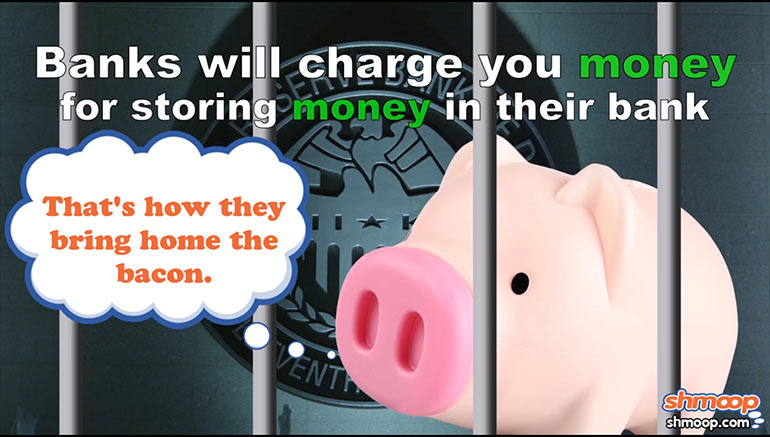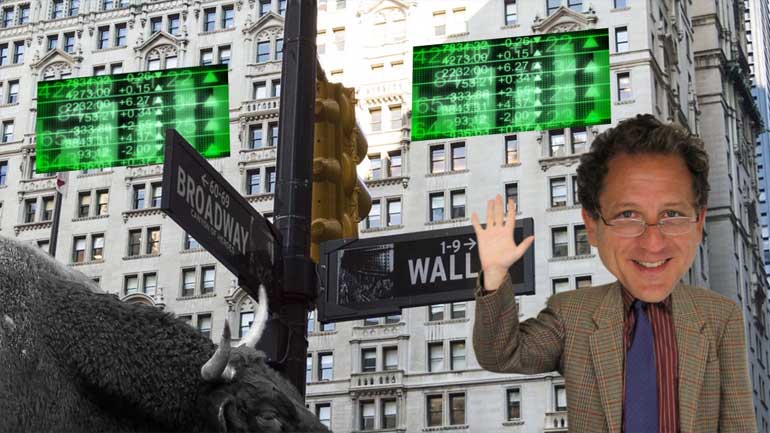ShmoopTube
Where Monty Python meets your 10th grade teacher.
Search Thousands of Shmoop Videos
Personal Finance Videos 520 videos
Finance: What are Above Par and At Par? 8 Views
Share It!
Description:
What are Above Par and At Par? Above par is when bonds trade at higher prices than face value. At par is when bonds are trading at face value. It seems to make sense that bonds would trade at their face value, but above par trading happens when interest rates are dropping, creating a lesser yield and higher price as they have an inverse relationship.
- Social Studies / Finance
- Finance / Financial Responsibility
- College and Career / Personal Finance
- Life Skills / Personal Finance
- Finance / Finance Definitions
- Life Skills / Finance Definitions
- Finance / Personal Finance
- Courses / Finance Concepts
- Subjects / Finance and Economics
- Finance and Economics / Terms and Concepts
- Terms and Concepts / Accounting
- Terms and Concepts / Bonds
- Terms and Concepts / Financial Theory
- Terms and Concepts / Investing
- Terms and Concepts / Muni Bonds
Transcript
- 00:00
Finance- a la shmoop....What are above par below par and at par...First what is [Man discussing at par on a golf course]
- 00:09
at par and yeah this may be not enough to make the tour but not too shabby but
- 00:14
what about in the finance world if a bond or other dead or preferred stock is
- 00:19
trading at par or at a hundred it's trading at face value and investors
- 00:25
buying the bond expect to get a return that matches the bonds coupon or [Dollar bills falling]
Full Transcript
- 00:30
interest or distribution rate at par bonds are rare though most trade either
- 00:35
above or below par well when interest rates drop investors are willing to pay
- 00:40
more for older bonds with higher coupons and bonds will then trade above par when
- 00:46
interest rates increase while those lower interest rates look about as [Interest rates go up on a see-saw]
- 00:50
appealing as mold on your roast beef sandwich and bonds will trade below par
- 00:55
for less than the face value well interest rates aren't the only things
- 00:59
that effect a bonds ability to trade at par by the way company news can affect
- 01:04
it as well like if an alien spaceship attacks your factories and kidnaps your [Alien spaceship shoots factory and explosion occurs]
- 01:08
staff well your bonds value likely will decrease so let's say a bond yields 7%
- 01:14
meaning that for each thousand bucks you get 35 dollars paid to you twice a year
- 01:18
well this bond was issued eight years ago and now similar risk bonds have gone
- 01:22
way up in price and yields have gone way down so this bond might be quoted at 110
- 01:27
meaning that you pay eleven hundred dollars for that same sheet of paper
- 01:31
today so that your yield is not in fact 7% but rather 10 percent less than 7%
- 01:39
because you've paid and percent more for the bond that is you paid 10% over par
- 01:44
that new yield is 6.3% you paid 10 points over par for
- 01:48
the same 35 bucks twice a year that you're getting so that's above par below
- 01:52
par and at par if you're ever more than 30 above par well there's probably at [golf club stuck in a tree]
- 01:57
least one club stuck in a tree somewhere or swimming in a lake
Related Videos
GED Social Studies 1.1 Civics and Government
What is bankruptcy? Deadbeats who can't pay their bills declare bankruptcy. Either they borrowed too much money, or the business fell apart. They t...
What's a dividend? At will, the board of directors can pay a dividend on common stock. Usually, that payout is some percentage less than 100 of ear...
How are risk and reward related? Take more risk, expect more reward. A lottery ticket might be worth a billion dollars, but if the odds are one in...





































































































